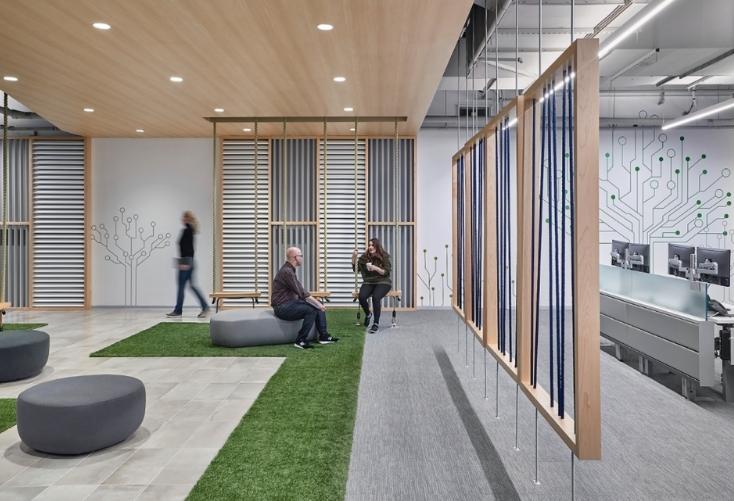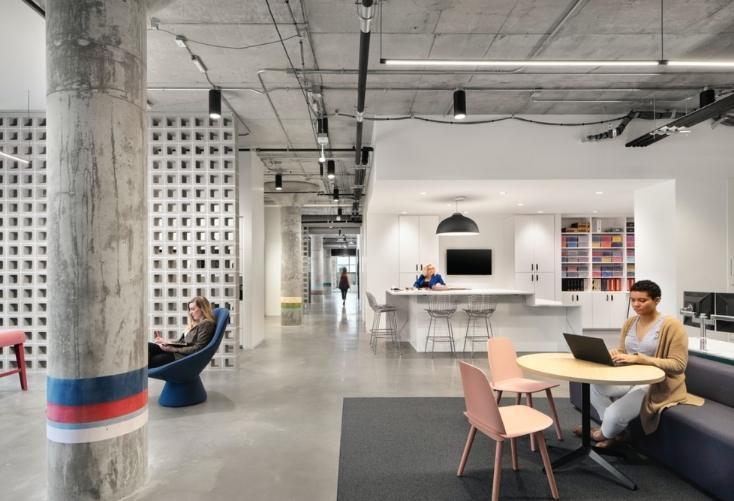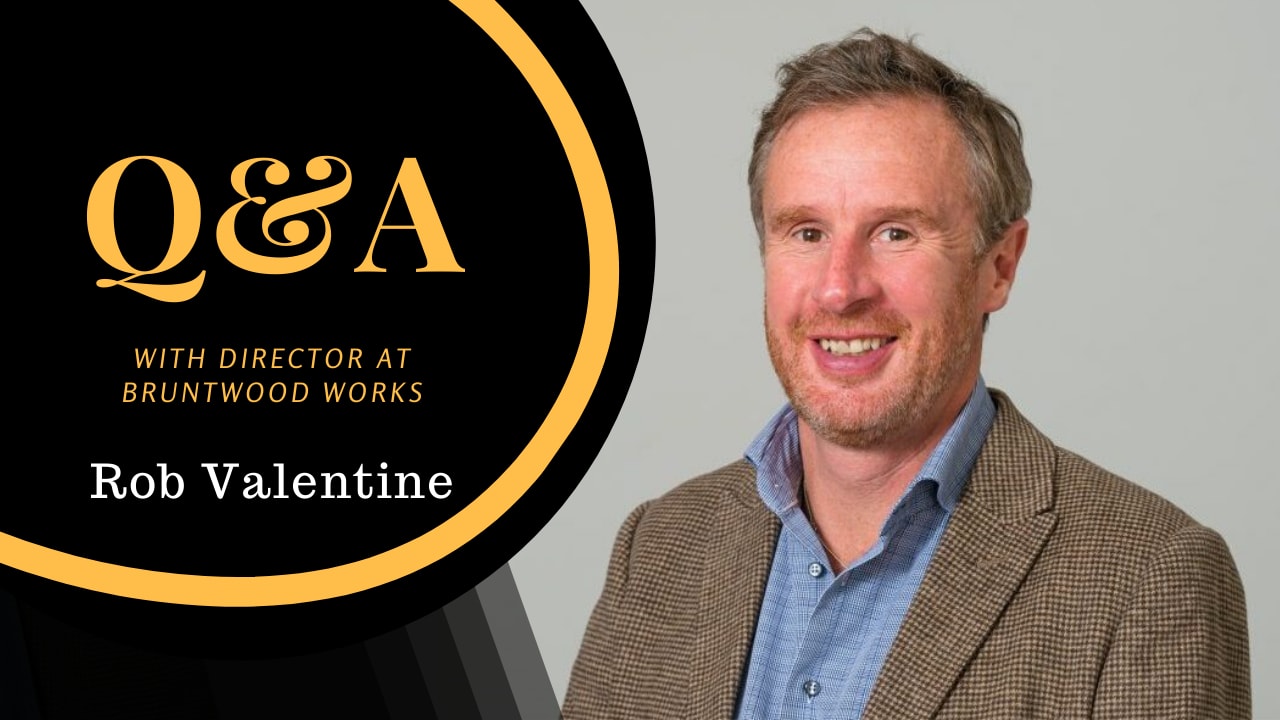- What does “agility” mean in relation to today’s workplace environment, and how could it manifest itself 50 years from now?
- Workspace design experts Diana Pisone from Ted Moudis Associates and Kelly McEachern from Perkins&Will took part in a Q&A with Allwork.Space.
- The conversation also focused on designing for multiple “personas” and how to accommodate different personality types.
Most conversations around the future of work centre around the “agile working” concept. But what does “agility” mean in relation to today’s workplace environment, particularly in light of the pandemic? And how could it manifest itself 50 years from now?
Workplace design experts at Ted Moudis Associates and Perkins&Will have been evaluating agile workplace solutions that provide people of all personality types with their best chance for success. We asked them to share their insights.
Allwork.Space: Firstly, tell us about your respective firms.
Diana Pisone, LEED AP ID+C, Studio Principal-Chicago, Ted Moudis Associates: At Ted Moudis Associates, our primary goal is to create a space that will result in our clients being happier, healthier, and more productive.
We’re invested in the success of the project, not just from an aesthetic standpoint, but from a truly functional perspective.
My role is “sand”. I’m part of a very strong team and I fill in the blanks between them to round out the team as needed from project to project and client to client.
I challenge them, I encourage them, I am their advocate, I am a mentor, and I am a student. It’s important to remember that we’re always students and are always learning.
It’s that which keeps us humble and inquisitive.
Kelly McEachern, Senior Interior Project Manager/Associate, Perkins&Will, Austin Studio: At Perkins&Will, one of the largest architecture and interior firms in the world, we emphasize research, benchmarking, and data.
These are central tenets of our work, specifically in the delivery of workplace strategies.
Our firm-wide commitment to design excellence, coupled with an emphasis on research and staying informed, puts us in the top tier of the industry.
As a seasoned Corporate Interior Designer, I’ve become focused on workplace strategy consulting and serve as a regional resource for the Southern U.S. region of our practice.
I also work closely and collaborate with our firmwide workplace strategy network and partner with our various Perkins&Will studios on projects across the nation.
Allwork.Space: How have you been working over the last 12 months: moving forward, will you be returning to the office full-time or embracing hybrid work, and why?
Kelly McEachern: We implemented a firm-wide return-to-studio effort early last summer and created protocols for meeting safely in the office. Without mandating any particular quotas, we encouraged our team members to use the office as a resource by making it as accommodating and comfortable as possible during the pandemic.
We did this so as not to limit anyone who wanted or needed to use the office. We surveyed our staff and implemented a staged return based on the results.
We assigned seats to individuals interested and eager to come back to the office and provided hoteling spots for those who would be periodically stepping in, whether for meetings or simply to use office resources.
We increased the number of individuals returning to the office during the second phase, though our occupancy dropped as COVID-19 cases spiked in the fall.
We’re continuing along the same path and taking baby steps to a hybrid model.
Employees are in the office some portion of the week, and they have the flexibility to choose when and how often. We’re working through new workplace solutions and processes to set us up for success for a hybrid work model that lasts into the future.
Diana Pisone: For the past 12 months we’ve had a voluntary return to the office policy. As the vaccine rolls out, we’ve maintained this policy in respect of everyone’s personal situations.
“The “agile workspace” is most simply defined by the allowance of staff to individually curate their environmental experience in a way that best promotes their work goals…what has changed post-pandemic is the understanding, acceptance, and trust of this definition.”
Diana Pisone
We’ve also noticed an organic increase in staff returning to the office as our communities continue to open up. At this time, we’ve not made any formal policy changes, but we are looking forward to seeing more of our team as time progresses.
Allwork.Space: How would you define an agile workspace, and does this differ to how you would have defined it pre-pandemic?
Diana Pisone: The “agile workspace” is most simply defined by the allowance of staff to individually curate their environmental experience in a way that best promotes their work goals.
This could be sitting in an enclosed room to focus, sitting in an open office area to allow for osmosis of team activities to saturate them, or it could be working from home for whatever reason (focus time, health reasons, etc).
My definition remains the same; what has changed post-pandemic is the understanding, acceptance, and trust of this definition.

Kelly McEachern: The term “agile workspace” is very abstract.
We’ve always defined agile working as a means of cycling through job functionalities over a period of time while working in the office environment. For example, employees might engage in team brainstorms in the morning, then separate for focused work, and come back together in the afternoon for a meeting.
Agile workspaces support shifting needs throughout the work cycles inherent to project or product development. More so lately, we see this term being used to describe flexibility and choice provided with a variety of work setting options.
The term “agile” is being used more loosely now and is overlapping with concepts related to mobility and flexibility such as “Activity-Based Working”.
We actually created a document to help define, explain, and identify the difference in all of the workplace terminologies such as “hoteling” and “desk sharing” and identify where there is crossover.
Agile working is not a drastically new concept.
As we start to return to the office, we have the opportunity to develop a new work model by reevaluating the best work settings for all the varied tasks while providing employees the autonomy to choose what works best for them.
Allwork.Space: Why is it so important to design for different personality types?
Diana Pisone: Just as not every student learns the same, not every staffer works the same. Some thrive on chaos, and all the sounds of a busy office murmur like a soft hum in the background. For others, the frenetic energy is stressful and complicates how they can process information.
Kelly McEachern: One of Perkins&Will’s internal research labs is a human experience lab (Hxlab). A few years back, the lab studied different personality types and the responses that each had to the work environment.
“Conversations around diversity are extending into the topic of neurodiversity and individual working and learning needs.” – Kelly McEachern
Different personalities require different solutions; not everyone performs their best under the same set of circumstances.
Some individuals thrive in an exciting, energetic environment and don’t mind the buzz of an open office. Others are easily distracted by sounds and visual movements and require a more quiet or private location to work. Conversations around diversity are extending into the topic of neurodiversity and individual working and learning needs.
Activity-based working gives an individual different options within the office environment and enables them to find the right place for the type of work they need to perform.
If we can put a positive spin on the experiences of the past year, it’s that we have a real opportunity to create a better “normal.”
There were aspects of the workplace that were in need of reconsideration and transition, but there wasn’t an urgency to reimagine these impacts until now.
We are primed for change!
Allwork.Space: How does one go about designing an office for different personality types?
Kelly McEachern: We’ve created six different “personas,” or workplace “user types” that we use to guide our workplace solutions. These persona models are adaptable to specific organizational workflows and cultural identities:
- The Transient completes 40% of their work at the office and works remotely about 60% of the time. They are incredibly loyal to their organization and are best known as being an independent worker.
- The Nomad is very “office-minded.” 60% of their work takes place at the office, but they likely work the other 40% of the time remotely. They’re most commonly known for their idea sharing and are often referred to as the “team player.”
- The Remote Worker primarily works remotely, as you likely guessed. Only 10% of their work takes place at the office. They prefer quiet and privacy while completing tasks.
- The Trekker is constantly on the go. 5% of their work takes place at the office, and they regularly travel in and out of town. They thrive on making work connections!
- The Anchor is a focused, heads-down type of worker. 90% of their work takes place at the office in a fixed location. Their consistent focus and concentration best identify them.
- The Resident moves freely around the office. 90% of their work takes place at the office in various locations. They are well known for their energy and interest in activity.

The important distinction between these personas is the type of work that they do—if they do individualized work in the office or out of the office, collaborative work in the office, or a good amount of both.
Many individuals will split their time bouncing back and forth between remote working and in-office working, choosing to structure their week around the right location for each task.
We will see everything on the spectrum here, based on individual personalities.
The Hybrid Office will be less focused on individual dedicated desks, and by shrinking these dedicated zones, we can increase the opportunities for more shared spaces and amenity spaces. When hybrid workers come into the office, we can celebrate engagement, collaboration, and the creative process through improved planning and design of a variety of settings.
An example of designing for various personality types is a solution created for a financial client. Different “recharge zones” were designed based on the idea that everyone needs space for a little break to de-stress from time to time.
There were recharge zones that were high energy, with video games, bright colors, and outdoor spaces and also recharge zones that were very zen and peaceful, recognizing that individuals benefit from different settings to improve mental and physical wellbeing.
While one personality type might prefer to let off steam by playing ping-pong, another may need a private moment to relax in a quiet and peaceful environment.
Diana Pisone: It comes down to giving people variety and choice.
If you create different spaces that cater to different work and work styles, you’re inherently supporting different personality types (however they are defined).
Allwork.Space: The media focuses on office space design – but how can we make other types of work environments more introvert/extrovert friendly, e.g. warehouses, factories, schools, hospitals, etc.?
Diana Pisone: For any work environment, allowing for individual space (even shared) is of value. It’s important to provide space for the introverted teacher to recharge quietly during their planning period, rather than in the group setting of a teacher’s lounge, and for the extroverted factory worker who stands quietly on the assembly line for 8 hours but might need social interaction to give them a needed burst of energy.
Kelly McEachern: Work environments across all sectors are starting to focus on a comfortable and hospitality focused design approach. Regardless of whether it’s an office, hospital, or school, we see more accommodating and engaging settings and environments.
This might mean incorporating sofas and comfortable chairs for relaxation or even offering improved foods and beverages such as a barista bar. One extrovert-friendly design feature we’ve provided for clients is the “instagrammable moment.”
People love being able to take a photo and tag where they are and who they are with. The focus on providing an engaging and attractive environment is increasing across all market sectors.
Allwork.Space: Aside from designing for different personality types, how else can companies use design to make their workplace more inclusive?
Diana Pisone: One way is through branding. Allowing staff to see themselves in the history or future of a company can indicate a business’s commitment to diversity, equity, and inclusion.
“…in 50 years, I believe we’ll maintain the same core elements, but we’ll modify them to meet the new technology, the new social requirements, and the new functional requirements of work types that are yet to be created.”
Diana Pisone
Kelly McEachern: As hybrid work models start to come to fruition, many of the discussions around inclusivity revolve around processes and procedures.
We need to make sure that the technology and spaces we design provide an equitable experience for the mother at home who is working with her kids, that’s the same as for the manager who’s in the office.
“An important part of the design process is creating a focus group that pulls together a cross-section of the team members and encompasses people of different ages, positions, backgrounds, and experiences.”
Kelly McEachern
There needs to be an equitable sharing of information and the opportunity for everyone to engage with their team members. An important part of the design process is creating a focus group that pulls together a cross-section of the team members and encompasses people of different ages, positions, backgrounds, and experiences.
This allows a variety of perspectives to impact the office space to suit many different preferences and needs. Rather than having a small group of leaders making the decisions, we can diversify the team members involved in the process to impact the overall success of the workplace.
Allwork.Space: Finally, what do you think the office might look like in 50 years’ time?
Diana Pisone: To look forward, we need to look backwards. For the most part, we have the same components that we had 50 years ago (open office, private office, conference spaces, café space etc.). We do have some new additions (wellness rooms, prayer rooms, etc.).
What’s evolved is how the individual space looks and functions and the percentage of floor space that each component utilizes. So in 50 years, I believe we’ll maintain the same core elements, but we’ll modify them to meet the new technology, the new social requirements, and the new functional requirements of work types that are yet to be created.
Kelly McEachern: Design, planning, and workplace strategies are very cyclical, and it’s interesting to think about why that cycle happens. If we properly define and execute the hybrid workplace, I think we’ll make an indelible mark on the future of work.
Going completely remote will never be the solution, as humans crave and need physical interaction. At the same time, going back to the office full-time is an antiquated idea.
The days where an office meant rows of workstations will go away as we start to embrace a variety of different settings and tools. I would love to see the “cubicle farm” shift towards a more collaborative and varied work environment.

I don’t believe it is 50 years out that we might find ourselves taking technology to the next level, meeting and engaging in virtual reality settings that create the same experience for all participants. This might seem like something out of The Jetsons, but our technology is rapidly advancing, and it is very exciting to see!


 Dr. Gleb Tsipursky – The Office Whisperer
Dr. Gleb Tsipursky – The Office Whisperer Nirit Cohen – WorkFutures
Nirit Cohen – WorkFutures Angela Howard – Culture Expert
Angela Howard – Culture Expert Drew Jones – Design & Innovation
Drew Jones – Design & Innovation Jonathan Price – CRE & Flex Expert
Jonathan Price – CRE & Flex Expert















